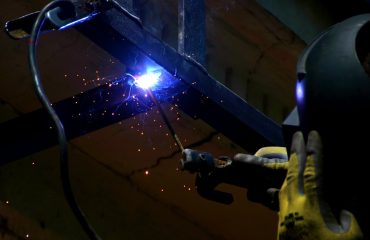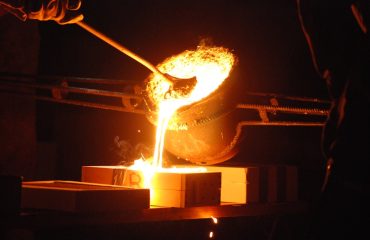Universal Parallel Flange (UPN) profiles, also known as parallel flange channels, are a common type of structural steel section widely used in various engineering applications. Understanding their properties and applications is crucial for structural engineers to design safe and efficient structures. This comprehensive guide delves into the intricacies of UPN profiles, providing a detailed overview for both students and seasoned professionals.
Understanding UPN Profile Geometry and Properties
UPN profiles are characterized by their parallel flanges and a single web. This distinct shape provides excellent bending resistance in one direction, making them suitable for applications where loads are primarily applied along one axis. Key geometric properties include:
- Flange Width (b): The width of the parallel flanges.
- Web Depth (h): The distance between the flanges.
- Flange Thickness (tf): The thickness of each flange.
- Web Thickness (tw): The thickness of the web.
- Section Modulus (Z): A measure of the section’s resistance to bending. This is crucial for calculating bending stresses.
- Area Moment of Inertia (I): Represents the resistance to bending and is used in deflection calculations.
- Weight per unit length: Determines the overall weight of the structure.
These properties are readily available in steel section tables and online databases, allowing engineers to quickly select appropriate profiles for their designs.
Applications of UPN Profiles in Structural Engineering
The versatility of UPN profiles makes them suitable for a wide range of applications. Their strength and relatively lightweight nature contribute to their popularity. Common applications include:
- Beams and Lintels: Supporting loads in floors, roofs, and other horizontal structures.
- Columns and Supports: Providing vertical support in various structures.
- Bracing Members: Adding stability and resisting lateral forces in frameworks.
- Cladding Supports: Supporting external wall cladding systems.
- Handrails and Guardrails: Providing safety features in buildings and other structures.
- Machine Frames: Used as structural elements in industrial machinery.
The choice of a specific UPN profile depends on the load requirements, span length, and other design considerations.
Design Considerations and Calculations for UPN Profiles
Designing with UPN profiles involves careful consideration of several factors. Engineers must perform detailed calculations to ensure the selected profile can adequately withstand the applied loads without exceeding allowable stresses or deflections. Key aspects of the design process include:
- Load Determination: Accurately calculating dead loads (self-weight of the structure) and live loads (occupancy, snow, wind).
- Stress Calculations: Determining bending stresses, shear stresses, and buckling stresses using appropriate formulas and considering factors of safety.
- Deflection Calculations: Ensuring that deflections under load remain within acceptable limits to prevent excessive sagging or vibration.
- Connection Design: Properly designing connections to ensure adequate strength and stability. This often involves the use of bolts, welds, or other fasteners.
- Stability Analysis: Checking for lateral-torsional buckling, especially for long, slender members.
Software tools and design standards (like Eurocodes or AISC) are often employed to streamline the design process and ensure compliance with regulations.
Material Properties and Selection of UPN Profiles
UPN profiles are typically manufactured from mild steel, but other materials such as high-strength steel or stainless steel may be used depending on the specific application requirements. The material properties, including yield strength, ultimate tensile strength, and modulus of elasticity, significantly influence the design calculations. Selecting the appropriate material and grade is crucial for ensuring structural integrity and performance.
Factors to consider when selecting a material include:
- Strength Requirements: The material must possess sufficient strength to resist the applied loads.
- Corrosion Resistance: In environments prone to corrosion, selecting a material with high corrosion resistance (like stainless steel) is essential.
- Cost Considerations: The cost of different materials and grades should be factored into the overall project budget.
- Availability: The availability of the chosen material in the required dimensions and quantities should be checked.
Advantages and Disadvantages of Using UPN Profiles
Like any structural element, UPN profiles have advantages and disadvantages. Understanding these is vital for making informed design decisions.
Advantages:
- High Strength-to-Weight Ratio: They offer excellent strength relative to their weight, making them efficient for many applications.
- Versatility: Suitable for a wide range of applications.
- Ease of Fabrication: Relatively easy to cut, weld, and drill.
- Cost-Effective: Generally a cost-effective solution compared to other structural sections.
- Widely Available: Readily available from most steel suppliers.
Disadvantages:
- Limited Bending Resistance in One Direction: Their parallel flanges provide excellent bending resistance in one direction but less so in the other.
- Susceptibility to Lateral-Torsional Buckling: Long, slender UPN sections can be susceptible to buckling under lateral loads.
- Potential for Shear Lag: The connection between the web and flanges can cause shear lag, affecting the overall strength.
By carefully considering these factors and performing thorough design calculations, engineers can effectively utilize UPN profiles to create robust and reliable structures.
This comprehensive guide provides a foundation for understanding UPN profiles in structural engineering. Further research into specific design codes and standards is recommended for practical applications.
SEO Tags:
UPN Profiles, Structural Steel Sections, Parallel Flange Channels, Structural Engineering Design, Steel Beam Calculations




